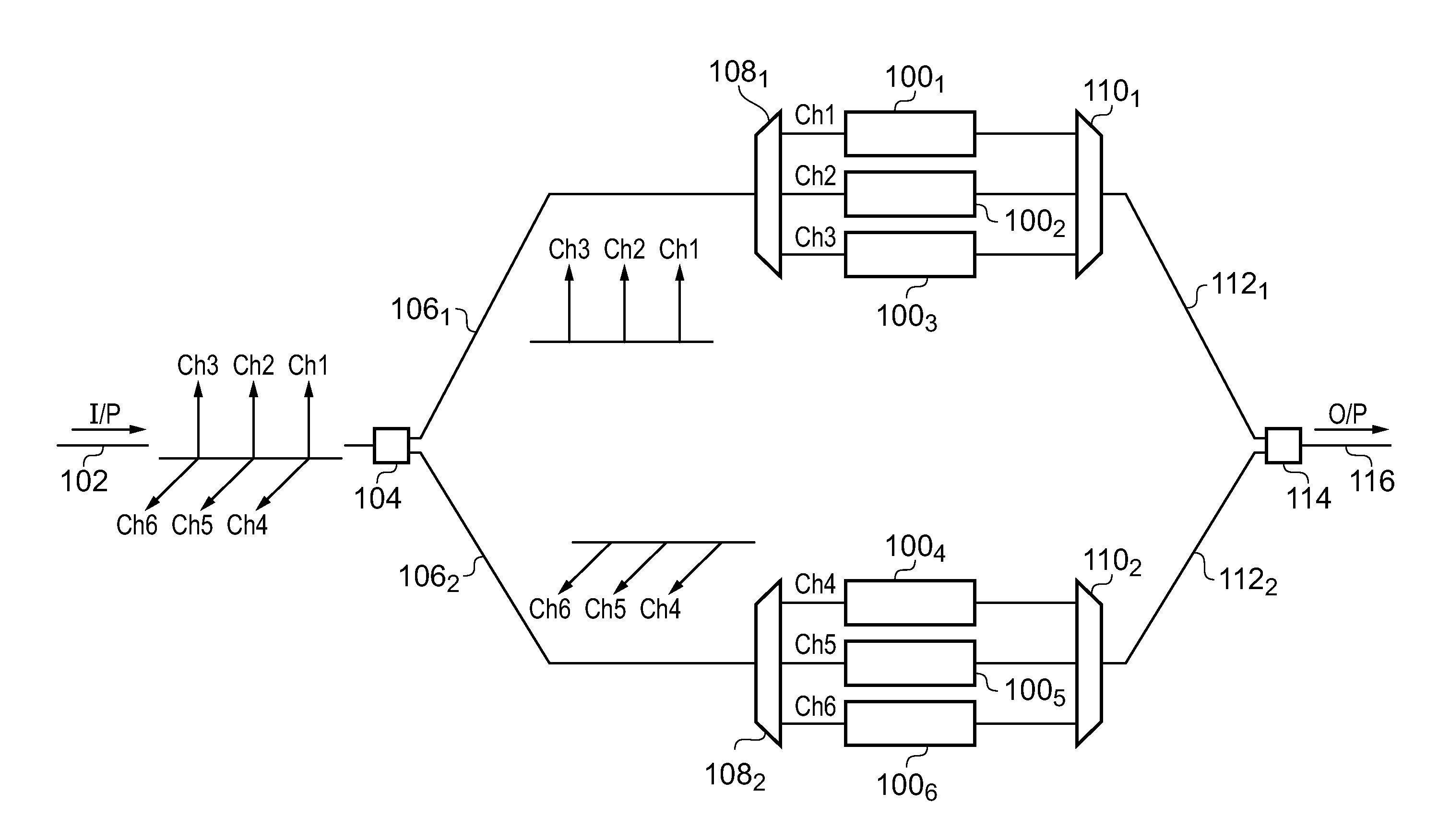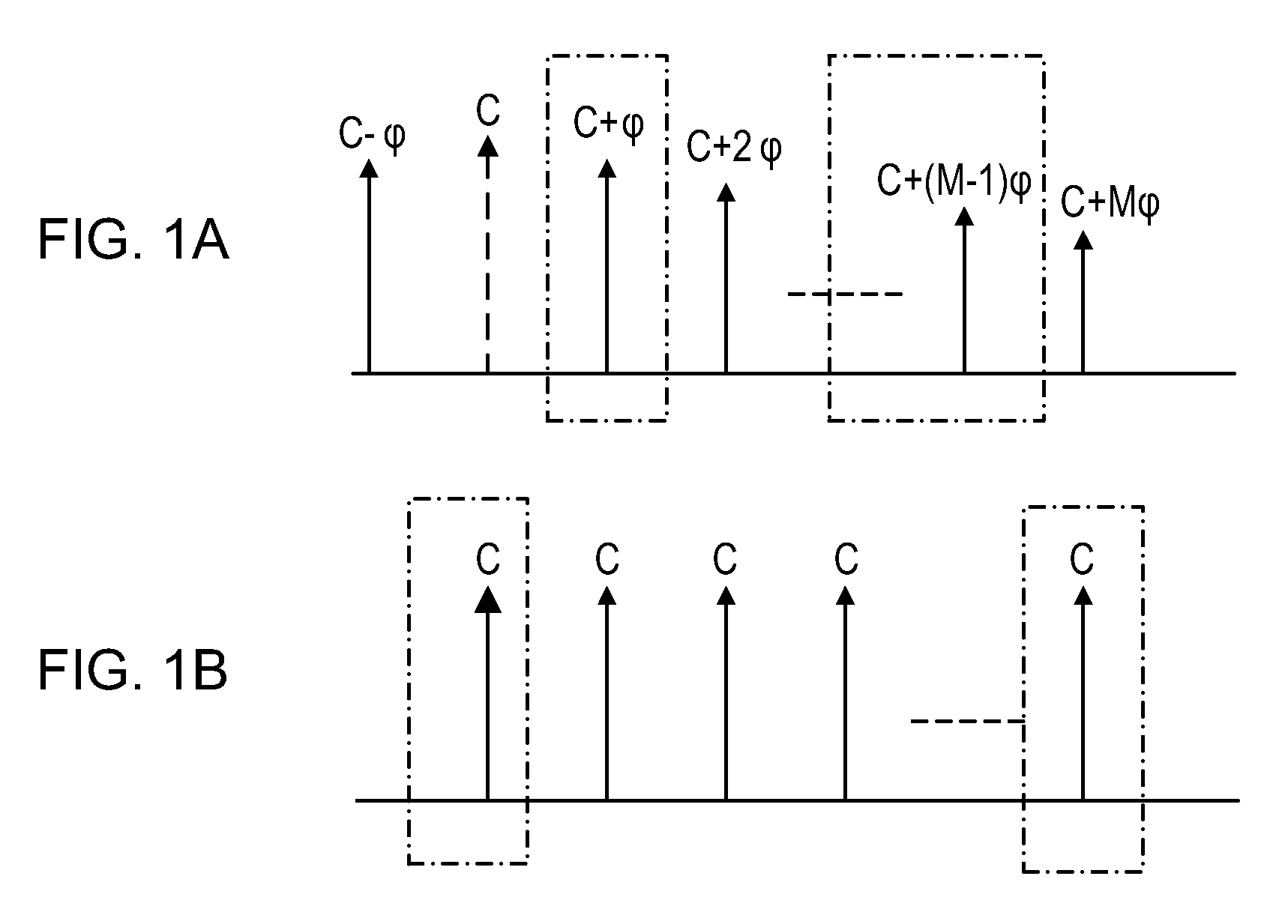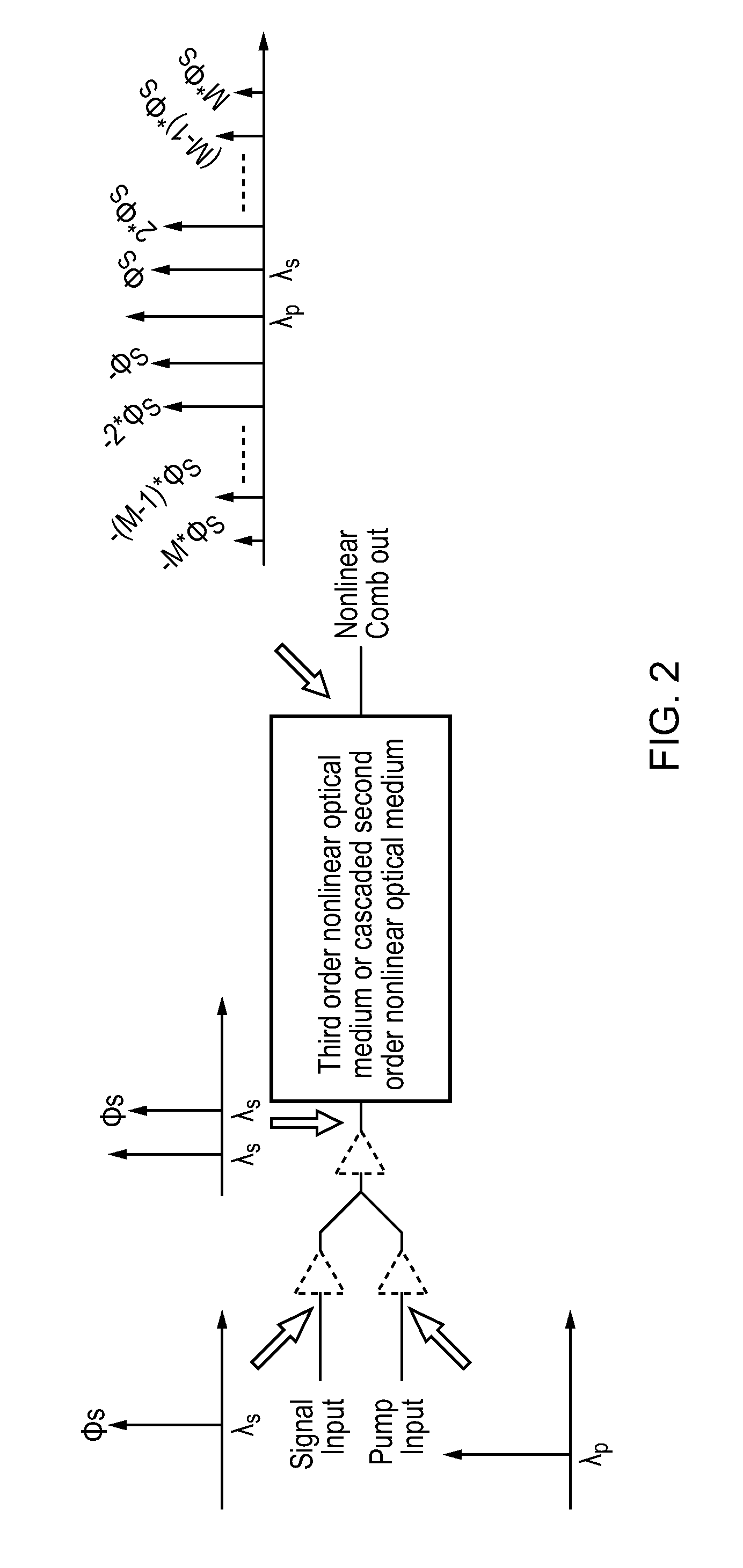Optical Signal Processing
a technology of optical signal and optical frequency, applied in the field of optical signal processing, can solve the problems of wasting valuable transmission bandwidth, requiring impractically low residual dispersion post-compensation, and power consumption as well as significant computing overhead associated with the aforementioned electronic functions. achieve the effect of reducing phase nois
- Summary
- Abstract
- Description
- Claims
- Application Information
AI Technical Summary
Benefits of technology
Problems solved by technology
Method used
Image
Examples
Embodiment Construction
[0040]FIGS. 1(a) and (b) show a conceptual diagram showing frequency components relevant for an optical regenerator according to a first embodiment for regenerating a multi-level phase encoded signal, where multi-level means more than binary, such as the four levels used in quadrature keying.
[0041]FIG. 1(a)—the upper part of the figure—shows a sequence of signal components generated by four wave mixing (FWM) of a phase encoded signal of the wavelength of the (zeroth order) component labeled C with a pump signal having a wavelength offset from the signal frequency. The signal components are separated equally in frequency or energy. It is also a good approximation to consider the signals to be equally separated in wavelength, and generally the plots in this document show wavelength rather than frequency or energy following convention. Generally a signal with phase encoded data of phase φ can be converted by four wave mixing with a pump signal having a wavelength offset from the signal...
PUM
 Login to View More
Login to View More Abstract
Description
Claims
Application Information
 Login to View More
Login to View More - R&D
- Intellectual Property
- Life Sciences
- Materials
- Tech Scout
- Unparalleled Data Quality
- Higher Quality Content
- 60% Fewer Hallucinations
Browse by: Latest US Patents, China's latest patents, Technical Efficacy Thesaurus, Application Domain, Technology Topic, Popular Technical Reports.
© 2025 PatSnap. All rights reserved.Legal|Privacy policy|Modern Slavery Act Transparency Statement|Sitemap|About US| Contact US: help@patsnap.com



